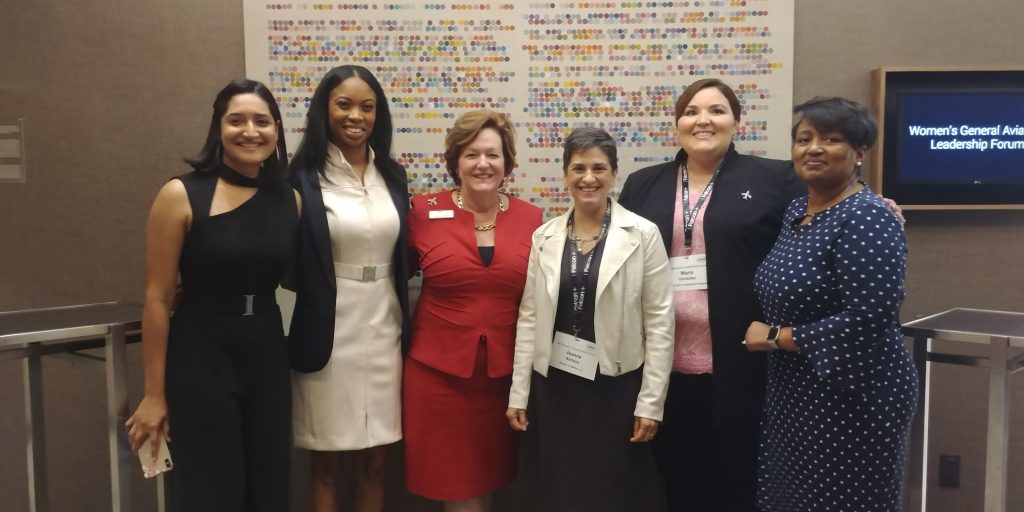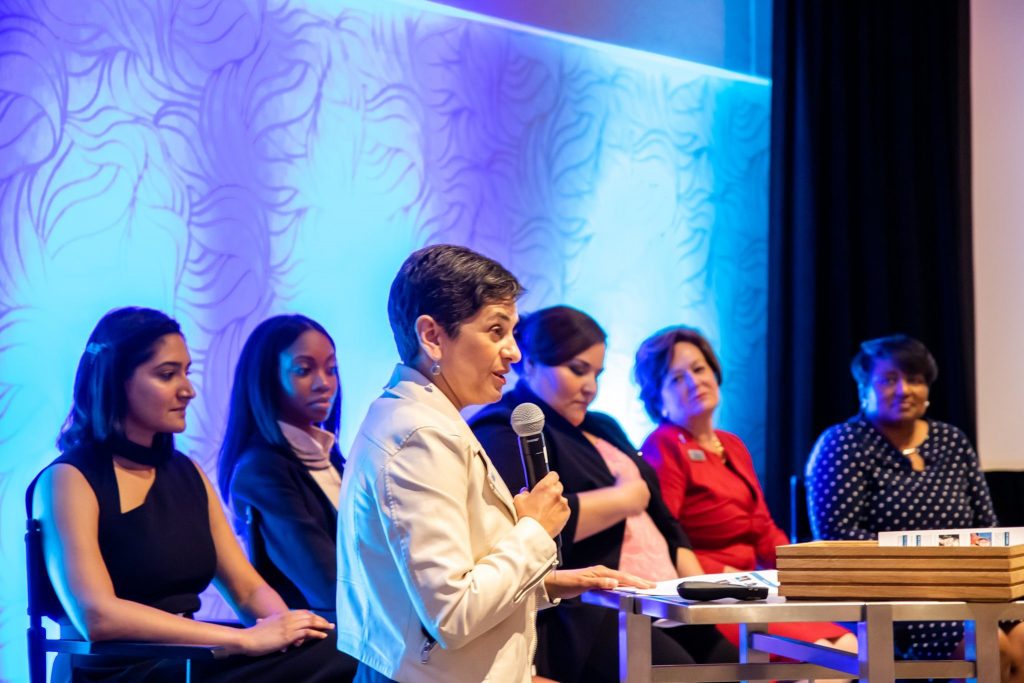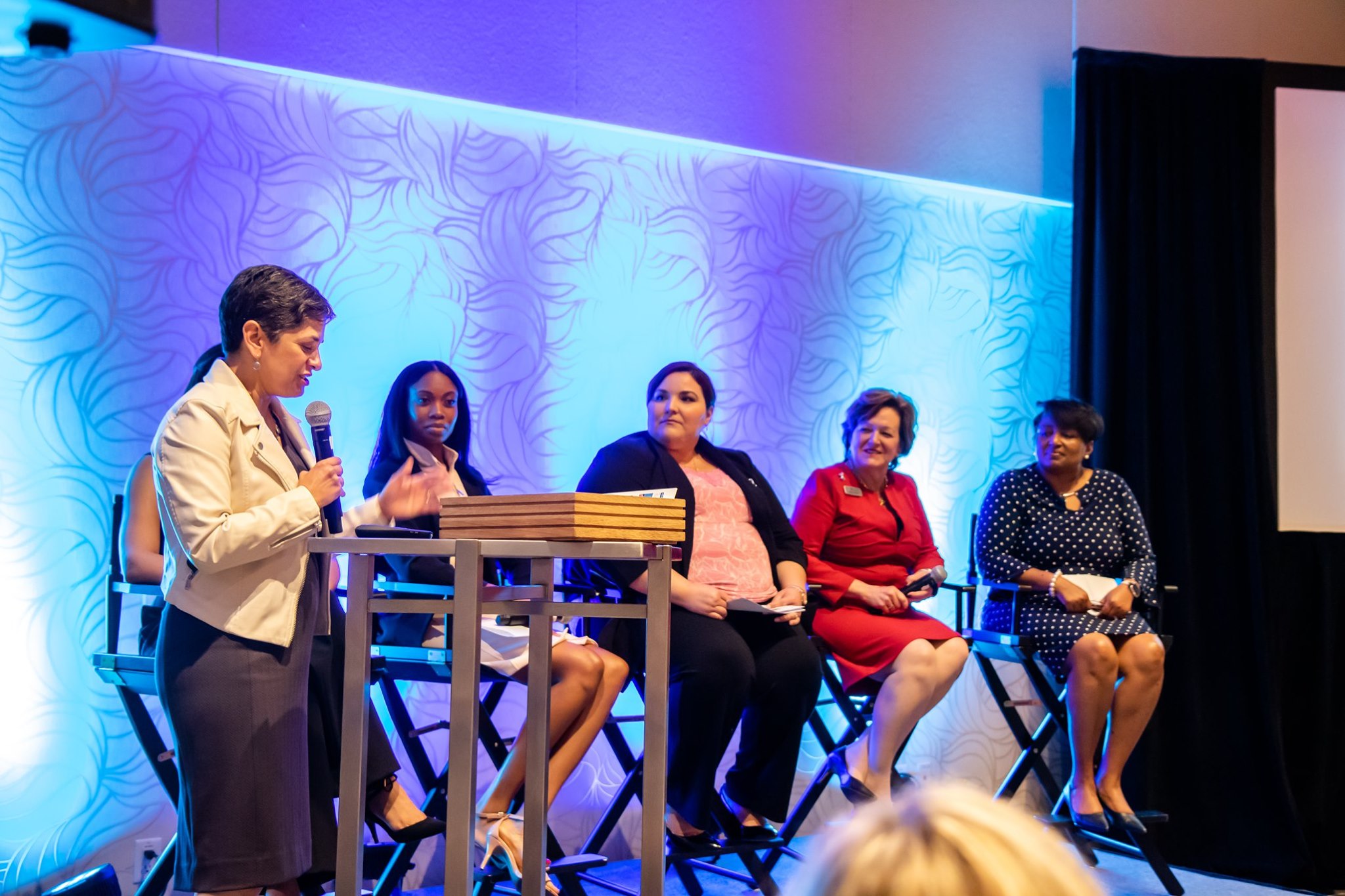Just what are the opportunities for women in aviation? And will the pressure around identifying and recruiting great talent ever let up?
Those are a few of the questions I wanted to answer when API’s Jennifer Pickerel and I attended the recent International Aviation Womens Association’s General Aviation Leadership Forum.
The IAWA Forum focused on opportunities for growth within the sector. It also emphasized the need to attract, retain and promote women in aviation.

I was honored to participate in an inspiring panel entitled, “Leading Today and in the Future.”
For that discussion, we rolled up our sleeves and delved into the issue of working across generations. I was joined on the panel by five amazing women*. (I’d like to extend a special thanks to the amazing Shelley A. Svoren of First Republic Bank, who had the vision for this conference and made it happen!)
We covered many important issues related to the inter-generational workforce. In particular, we discussed how aviation organizations can successfully hire, retain and expand the roles of women in general aviation. We also shared the skills that women need to master in order to lead.

Following are a few takeaways from the IAWA forum:
“Pull Up” and “Push Up”
On the “Leading Today” panel, I spoke about how, as we move further along in our careers, it’s our responsibility as aviation mentors and leaders to help others. In particular, we need to help the next generation to rise up to achieve their own goals.
In a mentoring role, those of us “seasoned” aviation industry veterans can and should extend a friendly hand to “pull up” our less experienced colleagues. This will help them move through the ranks. Maybe it’s merely by giving them extra responsibilities, or coaching them on their communication style. Or perhaps it’s just a matter of lending your ear to someone so they can bounce ideas off of you.
As simple as these examples might be, there actually are scores of ways that we can help them.
Likewise, when it’s your peers or even your bosses who deserve a lift, you can “push” them up. You might not be in a position to control their advancement, but offering kudos or a reference for an external position they’re vying for can make a lot of difference.
Remember that, after all, whether we “pull” or “push” someone up, we elevate and stretch ourselves as well!
“That Could Be Me”
One thing that struck me about the IAWA summit was how very impactful it proved to be for the young women present. It enabled them to see themselves reflected in the speakers and attendees. For one of the first times in my experience, women in aviation are hearing inspirational stories that they can identify with. They’re also realizing that, like men, they too can go forward and find success in aviation.
Young women are getting to experience tenured women as role models and thinking to themselves, “that could be me.” They can envision the possibilities, such as flying a plane or maintaining one. The traditional, longstanding barriers that might have discouraged or prevented women from pursuing such goals are beginning to dissolve.
The bottom line is that a female can aspire to run a successful aviation business and become a prominent, respected leader in the industry.
More Women in Aviation Needed
Rollie Vincent, who’s President of Rolland Vincent Associates, was one of the only men in a room full of women, and it was a welcome change. A week after the conference, Rollie wrote an AINsight column about more women finding a place in aviation. Here’s a snippet:
Although aviation—general and business aviation in particular—remains a ‘good ol boys club,’ the times are changing. Fresh perspectives and ideas, like flowers in spring, are everywhere, helping us navigate toward a better and more inclusive future, one where we break down stereotypes and open up the skies above us to a world of possibilities.
Another notable speaker on the topic of women’s changing roles in aviation was Kimberly Perkins. Kim has been an international jet captain for the past 15 years, and is the founder of the non-profit “Aviation for Humanity.” She’s also on the board of directors for the Pacific Northwest Business Aviation Association. Kim has authored a couple of important articles on women in aviation, one of which “How Industry Could Attract More Women to the Flight Deck,” was recently published in AINonline.
In that piece, she wrote:
. . . operators should insist on having a diverse group of candidates. It is not about lowering any standards; it is about removing obstacles that hinder others from joining the process. Ensure that your hiring practices do not exclude diversity by insisting that the new hire look and think like everyone else. Such biases perpetuate an exclusive good old boys club, which could affect productivity and workplace creativity. Studies from MIT and a variety of think tanks show that diverse groups make better decisions and are more productive. So, evaluate your hiring practices to ensure that you are not subconsciously limiting your potential by hiring only those that look and think like you.
Stay tuned!
Next month, I’ll pick up on this highly critical talent shortage topic when I share my experiences from speaking at the JETNET iQ Summit. At that event, the talent shortage topic broadened to cover a lot more recruiting and hiring-related territory. In the meantime, if you have any questions or comments regarding this or any aviation-related topic, I’m happy to hear from you!
*Panelists included: Divya Kamania of Boeing; Sierra Grimes of the NBAA; Joanne Barbera of Barbera & Watkins, LLC; Maria Gonzalez of McAffee & Taft; and Michelle Burrell of Rolls Royce CorporateCare.

